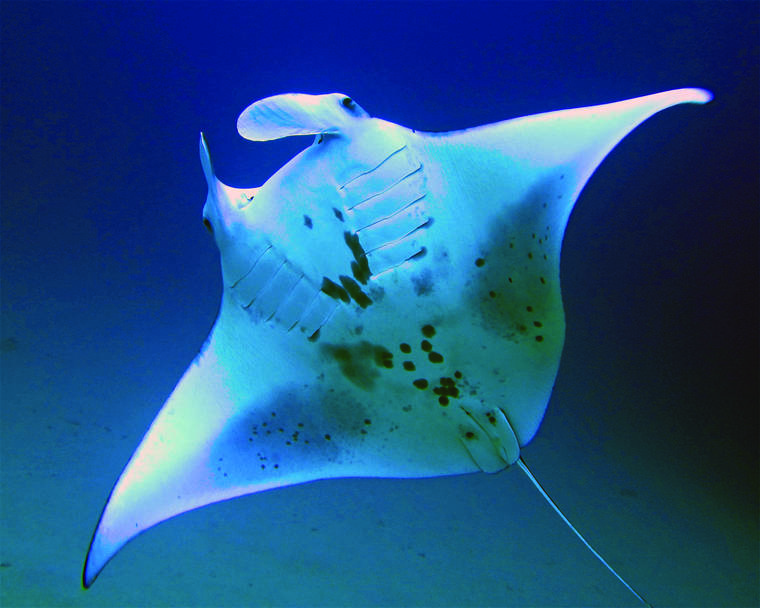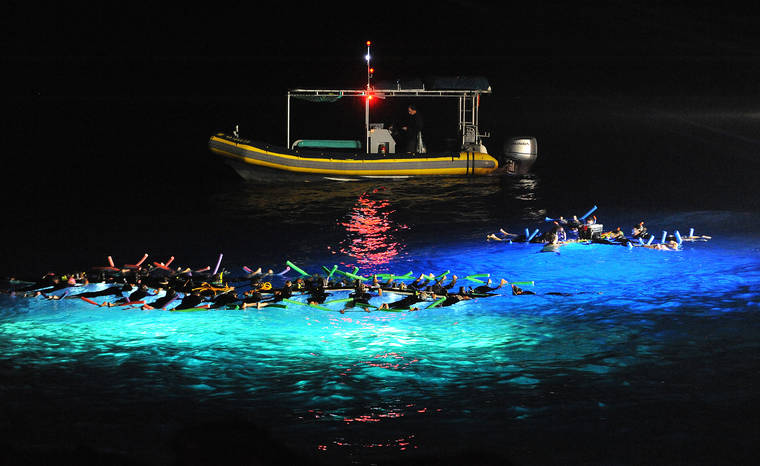KAILUA-KONA — Manta ray viewing site rules have yet to be implemented nearly six years after the state set out to regulate the industry, and over a year after a draft of the proposal was published.
The draft, released publicly in spring 2018 by the Department of Land and Natural Resources, outlines the proposed changes to Hawaii Administrative Rules that would create regulations for manta ray viewing and designate sites at Makako Bay in Kalaoa and Kaukalaelae Point in Keauhou for such uses. The most recent draft is dated September 2018.
Currently, the proposed rules are under review by the Attorney General’s office, according to DLNR Communications Specialist AJ McWhorter.
“Once there is Attorney General approval, DOBOR will begin the formal rulemaking process, which could take about year to a year and a half until we have rules in effect,” McWhorter said.
However, implementation is dependent on installation of mooring buoys, funding for which the DLNR’s Division of Boating and Ocean Recreation has yet to secure, he said.
The effort to create rules got underway in 2014 after it became evident that the manta ray viewing industry had expanded considerably in West Hawaii, and the activity was in need of regulation in order to preserve the resource and prevent the dangers posed by overcrowding.
That move came three years after the U.S. Coast Guard worked with commercial dive tour operators to draft voluntary safety standards to which the operators currently adhere.
The draft rules, in their most recent form, would establish a commercial manta ray operation permit costing $200 per month that would allow the permit-holder to operate at one of the two designated West Hawaii sites. A maximum of 30 permits would be issued for each site.
It would also establish manta ray viewing hours and a limit on the amount of time a boat can remain moored at a site. Under the new rules, commercial manta viewing would be permitted between 4 p.m. and 4 a.m.
Boats also would have to leave a mooring after 2.5 hours, and must remain outside the viewing area for at least 30 minutes before returning.
The rules would also limit the ratio of manta ray viewers to guides to 10 to 1. It would also implement safety requirements such as limiting boating within the viewing zone and requiring a propeller guard. It also defines that subsurface lighting would be prohibited and what constitutes excessive toplighting.
It would also establish administrative fines for violations, which would start at $250 and increase upon subsequent violations with the possibility of revocation of the permit.
Earlier this year, Gov. David Ige signed into law Act 252 mandating protection for all rays, including manta rays. It is now a misdemeanor offense to knowingly kill, capture or abuse any variety of shark or ray in state waters. The fine for a first offense starts at $500 and reaches $10,000 for a third or subsequent offense.


